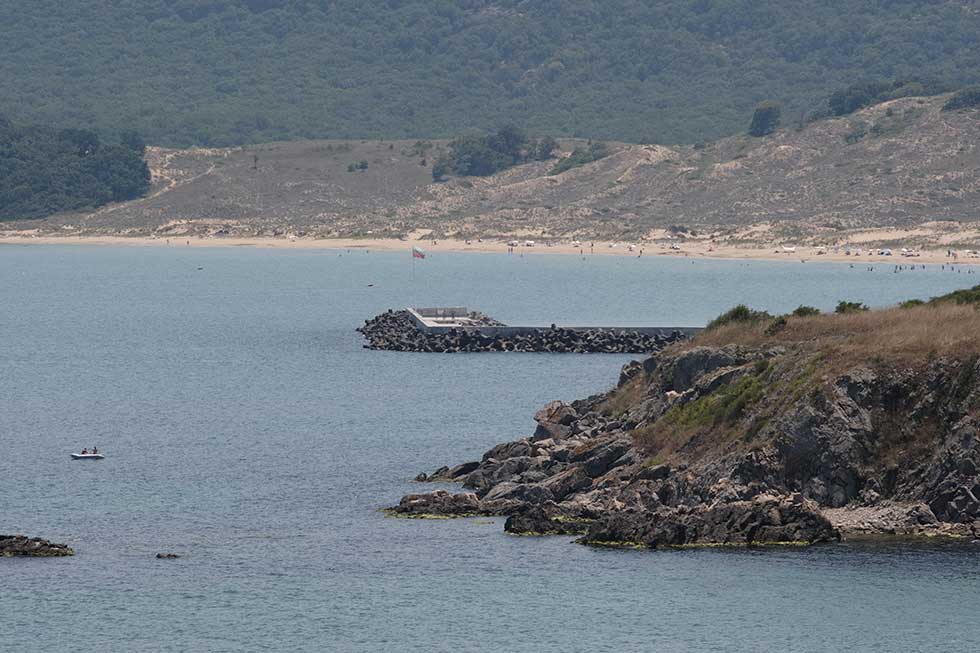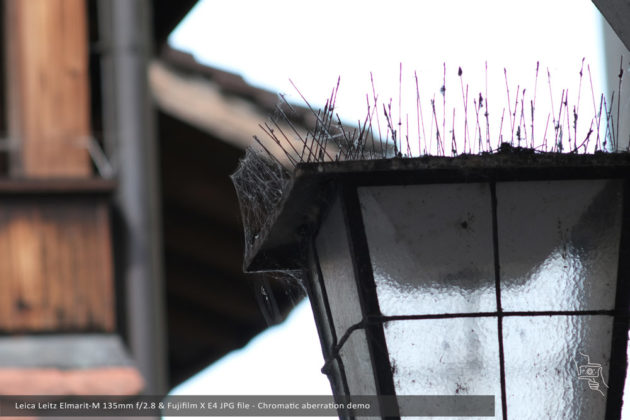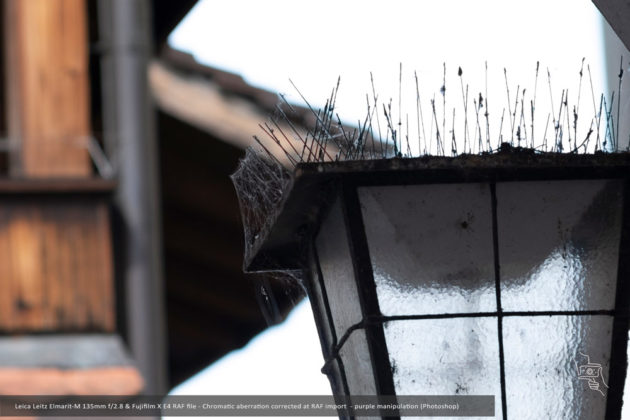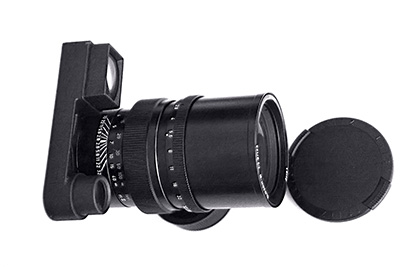Lens overview
The Elmarit‑M 135 mm f/2.8 (introduced 1963) is Leica’s fast M‑mount tele with built‑in rangefinder “goggles/eyes” that magnify the viewfinder and convert the 90 mm framelines to match the 135 mm field of view — a clever fix for long‑lens focusing on rangefinders. The optical design consists of 5 elements (according to Leica documentation, 5/3 elements), with a minimum focus distance of 1.5 m and an angle of view of approximately 18°. Depending on the version, the weight is approximately 730–980 g, with E55 filters on later types (early units use Series VII). Aperture range f/2.8–32 with a 9‑ or 12‑blade diaphragm by version.
At‑a‑glance
- Mount: Leica M
- Optics: 5 elements / 3 groups; 1.5 m MFD; ≈18° diagonal FOV
- Aperture: f/2.8–32; 9 or 12 blades (by version)
- Filter: E55 (Type II/III) or Series VII (Type I)
- Weight: ≈ 730–980 g (by version)
- Special: Built‑in goggles for frameline magnification on matching Leica cameras
Build and ergonomics
A classic all‑metal Leica build with a built‑in telescopic hood and positive aperture detents. The lens is front‑heavy on small bodies, but the large focus ring provides a long, precise throw that suits fine focusing at 135 mm. The goggles add bulk but are also used to improve focusing confidence by enlarging the rangefinder view — precisely what this focal length needs on old Leica M cameras. (Typical dimensions: ~114–120 mm length × 66 mm diameter).
Optical performance
- Sharpness — Good central sharpness at f/2.8 with better across‑frame consistency by f/5.6–8. Field reports consistently rate it portrait-friendly (not brutally clinical), with peak micro-contrast achieved at a stopped-down aperture.
- Color & contrast — Neutral‑to‑gentle Leica tonality typical of the era; mid‑contrast rendering that grades well in post.
- Bokeh & rendering — Smooth subject isolation at medium distances; highlight geometry depends on the blade count (rounder on 9‑blade later versions, more polygonal on 12‑blade early copies).
- Flare/CA — Backlight can induce veiling flare and axial CA at wider apertures (standard for fast telephoto lenses of the 1960s); the built‑in hood helps.
- Distortion/vignetting — Low geometric distortion; modest vignetting wide open that improves on stopping down. (Typical behavior for non‑telephoto 135s of the era).
Digital adaptation
- Leica M digital (M10/M11, etc.) — Native fit; goggles work as intended and bring up the 90 mm framelines adjusted to 135. EVF use further simplifies focusing.
- It can connect to other systems, including the Fuji X mount, with adapters, broadening its use. Note that adapting “goggled” Leica M lenses to some mirrorless cameras can be challenging due to physical obstructions caused by the goggle (and the camera handle). However, the Fujifilm X-E4‘s flat front design allows pairing this lens.
- DSLR adaptation to EF/F can’t reach infinity without corrective glass; physical obstructions for the goggled version.
Historical and collector context
Designed by Walter Mandler, the Elmarit-M 135/2.8 was manufactured from 1963 (Type I) with updates through the 1970s and 1990s (Type II/III). Most copies were produced in Canada. All M‑versions retained the distinctive goggled rangefinder unit. The lens occupies an interesting niche today: less coveted than the APO‑Tele‑Elmar‑M 135/3.4, but far more affordable, and historically significant as Leica’s fast RF tele solution.
Introduced as a premium Leica M tele lens with the distinctive rangefinder “goggles,” the Elmarit-M 135/2.8 carried professional-grade pricing when new; on today’s used market, it’s surprisingly attainable, typically priced between €300 and € 750, depending on the version and condition (with clean, boxed sets at the upper end). Some brand-new preserved lenses can be found at a price tag of around €1,000. Recent dealer listings and auction results commonly fall in this range.
Impressions
Field reports and sample sets characterize this lens as a practical portrait/telephoto option on M bodies, offering reliable focusing thanks to the magnified RF, pleasing mid-contrast at f/2.8, and crisp detail at f/5.6–8. On small mirrorless bodies, the mass is noticeable; using a grip helps with balance. Expect some purple/green fringing around backlit edges, which is minimized when the aperture is wide open. This fringing can be cleaned up with a stop or two and light correction.
Sample Photos
Verdict — Pros and Cons
Pros
- Built‑in goggles improve framelines and RF focusing at 135 mm
- Solid all‑metal construction; built‑in hood
- Good center sharpness; very usable by f/5.6–8
- Affordable entry into classic Leica telephoto rendering
Cons
- Heavy/bulky for an M lens; front‑heavy on small bodies
- Axial CA and some flare at wider apertures
- Only possible to adapt to flat front cameras (no handle); DSLR adaptation to EF/F can’t reach infinity without corrective glass
- Early vs late copies differ (blades/filters), so specs vary by version









